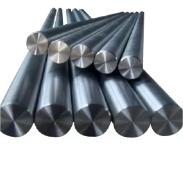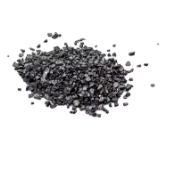**The Hidden Metal Heroes Holding Railroad Tracks Together**
(What Kind Of Metal Is A Railroad Tie Plate)
Picture a train barreling down the tracks. The wheels clack rhythmically. The ground rumbles. What keeps those heavy steel rails locked in place? Meet the railroad tie plate. These small, flat pieces of metal might look unremarkable. They’re the quiet workhorses of the railway world. Let’s dig into what they’re made of—and why that matters.
Railroad tie plates sit between the wooden railroad ties and the steel rails. Their job is simple but vital. They spread the weight of passing trains evenly. They stop the rails from digging into the wood. They keep everything aligned. Without them, tracks would warp faster. Trains would wobble. Delays and accidents would multiply. So what metal handles this high-pressure role?
The answer is steel. Not just any steel. Railroad tie plates use medium or high carbon steel. Carbon makes steel harder and stronger. Think of it like adding extra reinforcement to concrete. The higher the carbon content, the tougher the metal. These plates face constant stress. Heavy loads. Weather extremes. Friction from wheels. Carbon steel can take the beating.
Why not regular iron or low-carbon steel? Iron is softer. It bends and wears down faster. Low-carbon steel lacks the muscle for heavy loads. Over time, it would deform under pressure. High-carbon steel resists wear. It stays rigid. It lasts longer. That’s key for something buried under trains all day.
Railroad tie plates aren’t just slabs of metal. Their design is clever. They’re slightly curved to cradle the rail. Holes are punched along the edges. Spikes or screws go through these holes to pin the plate to the wooden tie. The shape ensures the rail stays at the correct angle. This keeps trains running smoothly. No sideways tilting. No sudden shifts.
The steel is often treated to fight rust. A coating of zinc or a paint-like layer adds protection. Rain, snow, and humidity can’t easily eat into the metal. This slows corrosion. It buys time between replacements. Maintenance crews appreciate that.
You might wonder—why not use cheaper materials? Cost matters, but so does safety. A failed tie plate could derail a train. Repair crews would swarm the tracks. Delays would pile up. Strong steel saves money in the long run. Fewer replacements. Fewer emergencies. Trains stay on schedule.
These plates also handle temperature swings. Steel expands in heat. Contracts in cold. The tie plates need to flex just enough without cracking. High-carbon steel walks that line. It’s rigid but not brittle. It adapts without breaking.
(What Kind Of Metal Is A Railroad Tie Plate)
Next time you see a train, remember the tie plates. They’re underfoot, unnoticed. They don’t gleam or grab attention. But they’re doing the hard work. They’re the backbone of the track. Strong steel, smart design, and stubborn durability keep the wheels rolling.
Inquiry us
if you want to want to know more, please feel free to contact us. (nanotrun@yahoo.com)


